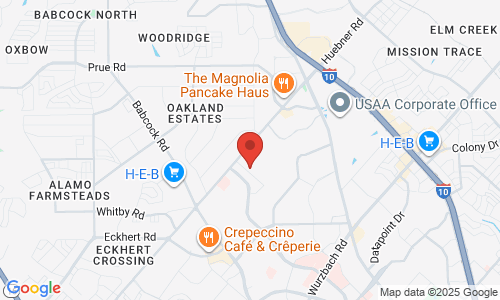Natural Cartilage vs Medpor - Why All The Confusion??? By Dr. Arturo Bonilla
 This question comes up all of the time! Is one technique better than the other? Why is it preferable to undergo two to three surgeries using natural cartilage instead of one or two with the Medpor or SuPor technique? What are the long-term risks of natural cartilage versus medpor? Is there more pain involved in one over the other? Did you know that the most common technique used worldwide by the most respected microtia surgeons is the “Natural Cartilage” technique?
This question comes up all of the time! Is one technique better than the other? Why is it preferable to undergo two to three surgeries using natural cartilage instead of one or two with the Medpor or SuPor technique? What are the long-term risks of natural cartilage versus medpor? Is there more pain involved in one over the other? Did you know that the most common technique used worldwide by the most respected microtia surgeons is the “Natural Cartilage” technique?
Well, let’s cut to the chase! I am NOT a medpor surgeon. I am a “Natural Cartilage” surgeon. I am a huge believer in using our own natural tissues. It makes sense…doesn’t it? Why would one use a hard, foreign material to fabricate the whole ear where there is going to be a lifetime of potential trauma with possible exposure, infection or rejection instead of our cartilage where the long-term chance of infection, exposure or infection is almost ZERO? I helped design a small wedge made out of porous polyethylene to provide a lift to the ear and help dramatically with protrusion. But it is important to note that this small wedge is hidden under the ear, which is made out of cartilage. The whole ear is made ONLY out of cartilage so that it can survive any kind of trauma for the rest of the child’s life. Patients have referred to this technique as my “hybrid technique” or “Dr. Bonilla’s Wedge”, etc… (I don’t like calling techniques under surgeons’ names).
Maybe some of this confusion results from surgeons believing that their technique is the best in their own hands. I get this, but it is important to relate the whole truth to patients.
I have heard it all. Isn’t the cartilage surgery so painful that that patients have to stay in the hospital for up to a week? ABSOLUTELY NOT! For the 1st surgery, I am a true believer in having the patients stay in the hospital overnight so that the nurses can take care of them while the parents can rest and relax. Our surgeries last only 2 1/2 hours. I don’t admit them for pain control. As a matter of fact, from a 1 to 10 pain scale, our patients are almost always at a 1 or 2. They go home the following morning with Tylenol syrup. There is no pain pump. There are no multiple hospital day stays. This is just something that made it out through the internet. My pediatric anesthesiologists are also true believers that any pediatric patient that undergoes a very lengthy surgery should be watched overnight. There is no reason to discharge a patient out of the hospital so quickly the same day after a lengthy anesthesia.
What about results? Isn’t this really why a parent picks one surgeon over another? Well, let’s talk about this. The cartilage technique has been around for a very long time….almost 50 years. This has been (and is still) the gold standard. The vast majority of surgeons who have a high degree of specialization toward microtia exclusively use cartilage as their technique of choice. Why is this. Well, start with…there is nothing that can replace our ears better than our own living cartilage. The results of cartilage surgery for microtia patients varies worldwide depending on the experience of the surgeon. When the experience is present, the cartilage results are amazing and last a lifetime without the worry of breakage, infection or rejection.
Why would anyone choose any other technique over the natural cartilage technique? Let’s talk about the real world today. There has been a push by a few surgeons that a Medpor Implant (plastic porous polyethylene implant) is a better choice over the natural cartilage. Let’s go through the same, usual talking points that come up over and over again with the polyethylene implants.
Misconceptions about Medpor vs Cartilage Dr. Bonilla performs only cartilage surgery
1) Can start at an earlier age to avoid teasing (as early as 3 years of age)
I don’t operate on children before the age of 6 for several reasons: A) There needs to be enough cartilage for sculpting the ear to match the opposite side, B) Before the age of 6 years old, the child is not so concerned and is much more cooperative than a child 3 years of age C) At 6 years of age, the child has has a better understanding of his/her ear procedure and is able to give some consent.
2) Not as invasive as rib cartilage surgery
Although some may think that the rib surgery is very invasive, that fact is that it is no more invasive than the flap that needs to be dissected under the scalp during the plastic polyethylene technique. Rib cartilage surgery is in the chest area but it is not heart surgery. The fact is that the ribs are just beneath the a layer of skin and fatty tissue and just beneath the muscles. Also it is important to know that only three small pieces of rib are taken…not the whole rib.
3) Avoids a large chest incision with a chance of a chest wall deformity
The fact is that in my practice the average incision is a little over an inch. When the patient is thin, the incision is around one inch in length. In 20 years of practice, I have never seen a chest wall deformity caused by the microtia surgery.
4) Can make the ear protrude much better than a cartilage surgery
This is an important topic to discuss because I hear this over and over. First of all, remember that we want to make the ear look as realistic as possible. If we try to make the ear protrude out too much, then it begins to look too bulky. The key is to make it protrude enough where the child can wear glasses without difficulty. Now let’s talk about protrusion with the plastic polyethylene implant. Remember that the implant is a hard plastic. The more the protrusion of the ear with the implant, the more it hurts to lay or sleep on that side. This is a very common complaint of patients that make it to my office for second opinions. The patients prefer to sleep on the normal side because it hurts to sleep on the implant side. This just does not happen with our own cartilage. The cartilage has some bend to it so that it does not hurt to sleep on that side.
5) Not as painful as the cartilage surgery
This is another misconception that gets passed around in the social media. In my practice using cartilage this is just simply not true. From a 1-10 scale, the vast majority of my patients have a 1-2 pain level. The reason is that that our patients all get a small epidural injection during surgery (of course while they are asleep) and they essentially wake up numb from the area of the ribs. They go home the next morning with a Tylenol elixir. Most of the time, we have to tell them to take it easy because they want to jump around soon after surgery.
6) The plastic polyethylene ear can move up and down as well as an ear made out of cartilage
While it is true that the plastic implant ear can be made to move up and down, the true fact is that they cannot make it move away and towards the head easily because it is a hard plastic. Hard plastic just doesn’t move and this is why children with the plastic ear complain of pain while trying to sleep on that side.
One final point I would like to make before I finish this post:
Be very careful what you read on social media posts!!!
Social media is a wonderful thing for parents looking for information and support. That being said, it can be very misleading and provide very incorrect information. There are some Facebook pages that are controlled by some administrators that really push for one procedure instead of allowing all of the options and opinions to be expressed by patients. This is occurring during the writing of this post.
NOW THAT WE’VE CLEARED THAT UP, LET’S TALK ABOUT THE FUTURE OF MICROTIA SURGERY!!!
As I previously stated, it is an obvious statement that there is nothing that can replace our own living tissues better than our own living tissues. There is no comparison from a piece of the child’s own living tissue to a foreign plastic implant. There is nothing that can be said to dispute that.
This is the reason that research in tissue engineering is concentrated on growing cartilage in the laboratory that is the patient’s own cartilage. The million dollar question is how soon will this technology be available? Well, it appears that the research is getting closer and closer.
We are presently involved in an FDA trial that looks extremely promising. If this is successful, this new technique could possibly replace the rib cartilage harvest as well as the plastic polyethylene technique. For more information, click here.








